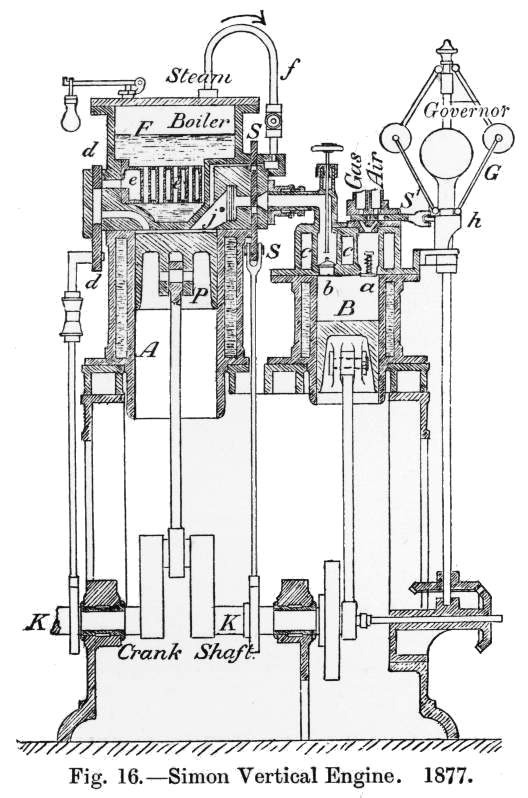Gallery opened 4 Apr 2015
Updated: 11 Apr 2015




The Simon Gas-Steam Engine |
Gallery opened 4 Apr 2015 |
The account given here is largely taken from A Text-book of Gas, Oil and Air Engines by Bryan Donkin, published by Charles Griffen & Co in 1900. The author has not been tracked down definitively, but he was probably the son of this Bryan Donkin (1809-1893) who in turn was the son of Bryan Donkin FRS. Our Donkin has dates of 1835-1902, and was the author of other books, including The Heat Efficiency of Steam Boilers and The Entropy Diagram and Its Applications. He also translated Theory and Construction of a Rational Heat Motor, by Rudolf Diesel, from the German. Otherwise he so far remains elusive. The Bryan Donkin Company still exists today.
 | Left: Simon engine with steam-boiler: 1878
|
A model of this engine (to what scale is unknown) was exhibited at the Universal Exposition of 1878 in Paris.
 | Left: Simon engine built by Otto Henniges & Co: 1880
|
Note that both the pumping and power cylinders have water jackets, the former presumably being needed because of the substantial amount of heat that is evolved when gases are compressed. I am only speculating, but presumably the jackets pre-heated the water fed to the boiler. (This is now confirmed for the 1878 version)
The Simon engine is unknown to Google, and this probably indicates a total lack of commercial success.

  
|